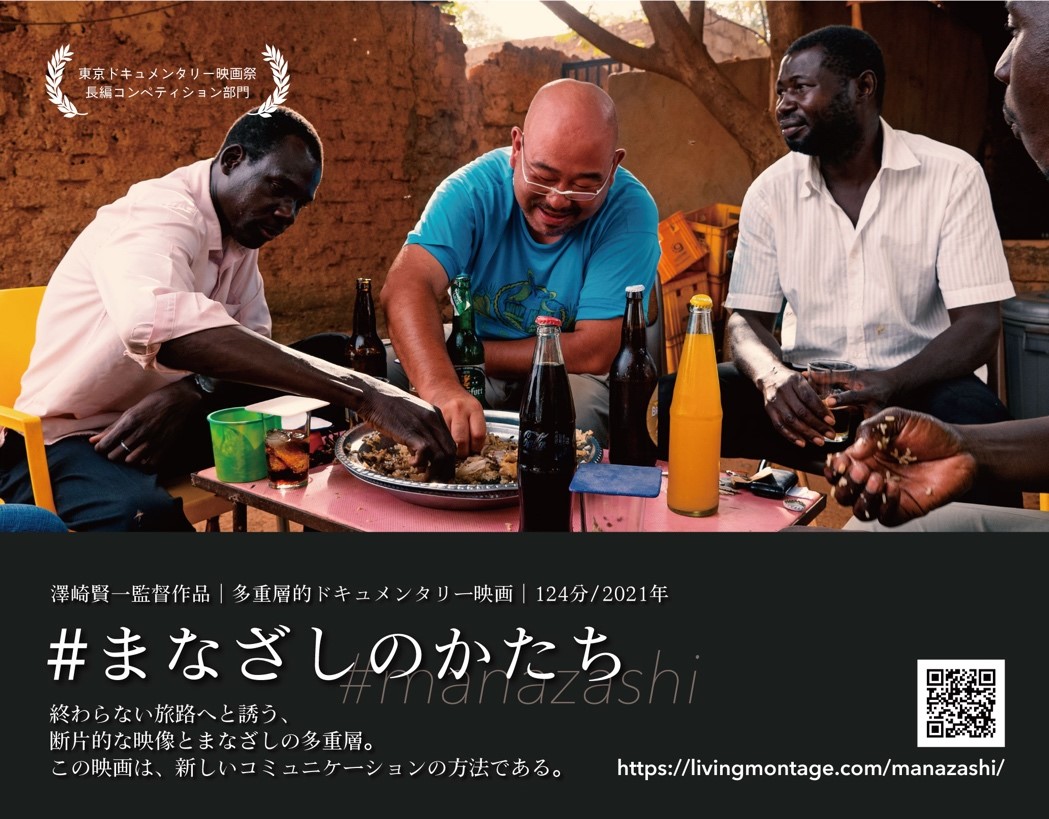From the Frontlines of Research and Studies [USA]: SAWAZAKI Ken’ichi (Research Institute for Humanity and Nature)
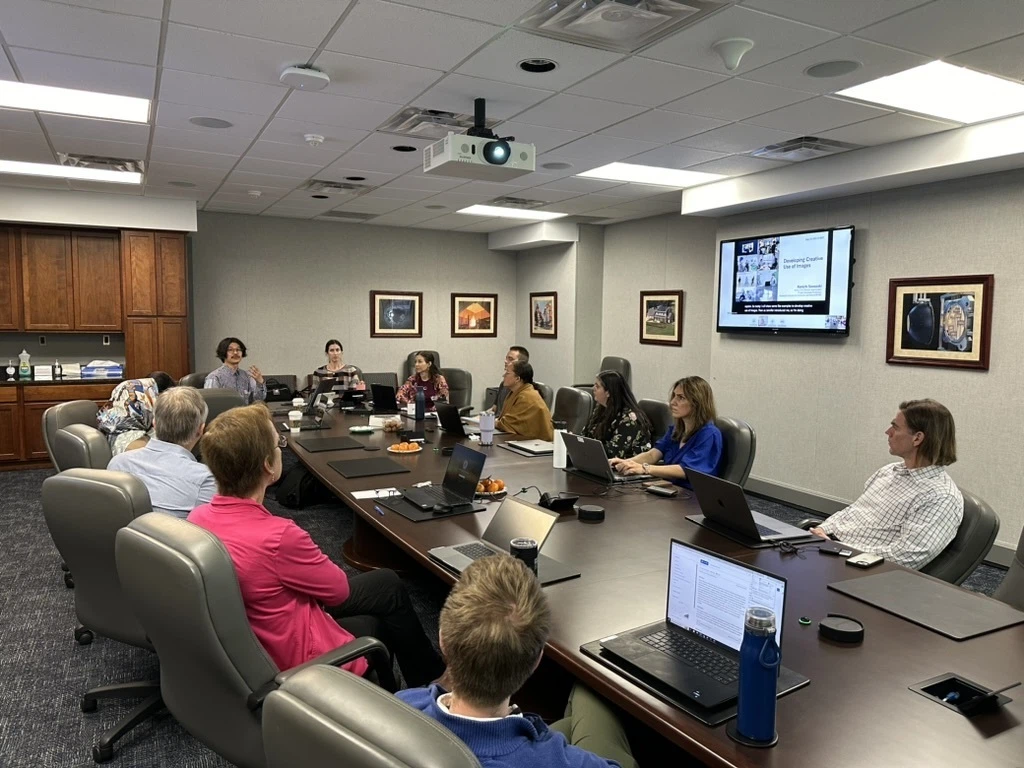
The National Institutes for the Humanities (NIHU) sends young scholars, who are participants in Institute-based projects and co-creation initiatives, to international seminars and research institutions abroad, including universities. This program aims to promote NIHU’s projects and support young scholars in their academic studies, presentations at international seminars, and other overseas research opportunities.
In this issue, we feature a report from SAWAZAKI Ken’ichi of Research Institute for Humanity and Nature, who was dispatched to USA.
With the support of NIHU’s program for dispatching young researchers abroad, I spent about one month, from August 6 to September 10, 2024, in Washington, D.C., working on personal and joint research. My research topic, decided on before my departure, was “Co-creation of Collaborative Knowledge Beyond the Divide of Scientific and Indigenous Knowledge: Commons-based Visual Dialogue for the Anthropocene.” Following research on this topic in the United States, the research was developed into the joint project “Practical Research into Decision-making Using Narrative Expression for Realizing a Sustainable Future.”
For some years I was active as an artist and filmmaker, but in recent years I have also conducted project-based interdisciplinary research into narrative methodology for promoting the intersection and development of communication from various perspectives (and particularly using images) in the knowledge formation process. Here I will discuss Meta-Film and Commons-Film, important keywords relating to filmmaking methodology, which I encountered during discussion with source persons in Washington, D.C.
Meta-Film is a method of filmmaking in which audience feedback is incorporated in meta fashion into the film via narration. Filmmaking project participants look back on the filmmaking process through a “meta” perspective, the value of their experience in the research process imparting a fresh viewpoint. #manazashi, a 124-minute long multitiered documentary I directed in 2021 and which has won numerous awards, in Japan and overseas, uses this approach. The work focuses on the sensitivities of field researchers working in Africa, Southeast Asia, and other regions using imaging technology to visualize and give presence to their feelings by incorporating voiceovers into the film to express their reactions to what they see on screen. This made clear the “meta” perspective overlap between the sensitivities of academic research and the artistic expression of the images. Co-creation across different fields heightened awareness and created a learning opportunity for all parties.
In Commons-Film, all project participants, including research subjects, film each other and after uploading the content to the cloud as common or shared resources, collaborate, each according to their own values and thoughts, on film-making. “Young Muslim’s Eyes: Crosswork between Arts and Studies” a project led jointly by NONAKA Yo of Keio University, AMO Kae of Kyoto University, and myself, is a precedent-setting example of this method. This project’s characteristic is that the medium of image is used not only for expression but also works as a kind of research and co-creation hub for interaction among people in different positions, specialties, generations, and cultural backgrounds.
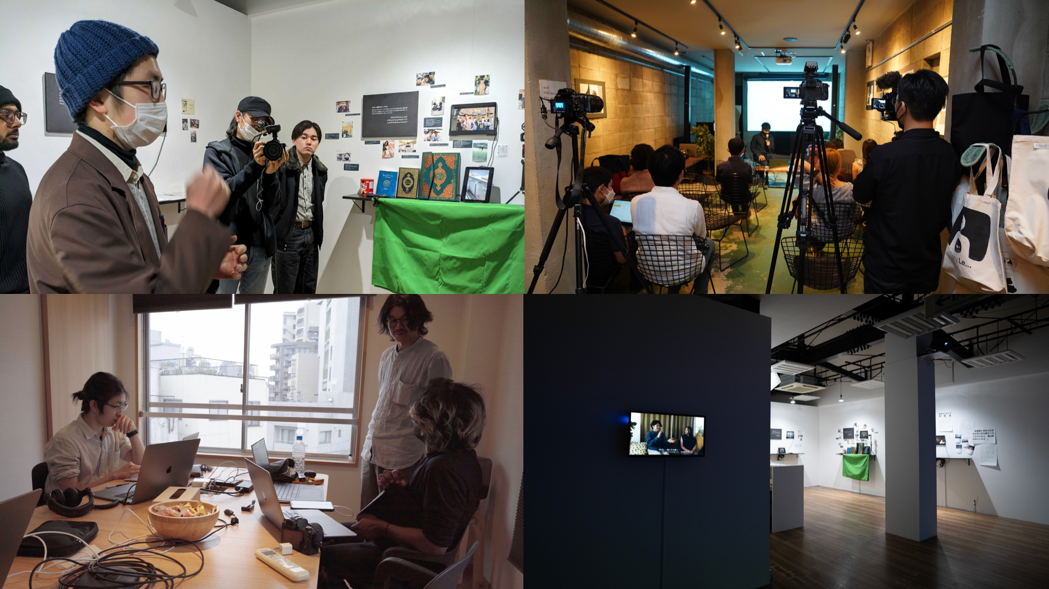
Behind the discussions I participated in during my stay in Washington, D.C. was the question centering on how the Meta- and Commons-Film methods can work in contexts different from those from which they emerged. I reached two major conclusions with regard to the potential for these methods. One, they can help researchers in different fields understand diverse viewpoints in the background of their respective research areas. Two, they can enable everyone involved, from researchers to local subjects and other persons involved in a project, to express their personal views.
My hosts in Washington, D.C. were Ilan Chabay, chair of KLASICA (Knowledge, Learning and Societal Change Alliance) and also specially appointed professor at Arizona State University, and KLASICA joint director Jennifer Helgeson, research economist at the National Institute of Standards and Technology (NIST).
Thanks to arrangements made by Ilan and Jennifer, during my trip I was able to talk to personnel from NIST and the Hirshhorn Museum. I also observed Decision Theater at Arizona State University. Through these discussions and observation, I discussed further with Chabay, Helgeson, and David Maggs, also a KLASICA joint director, and we co-authored the essay “Combining Art, Sciences, and Technology in Inclusive Decision Making for Community Resilience and Sustainable Futures.” Now back in Japan, I am currently (as of December 2024) working on polishing the essay, which we intend to submit for publication to an international journal.

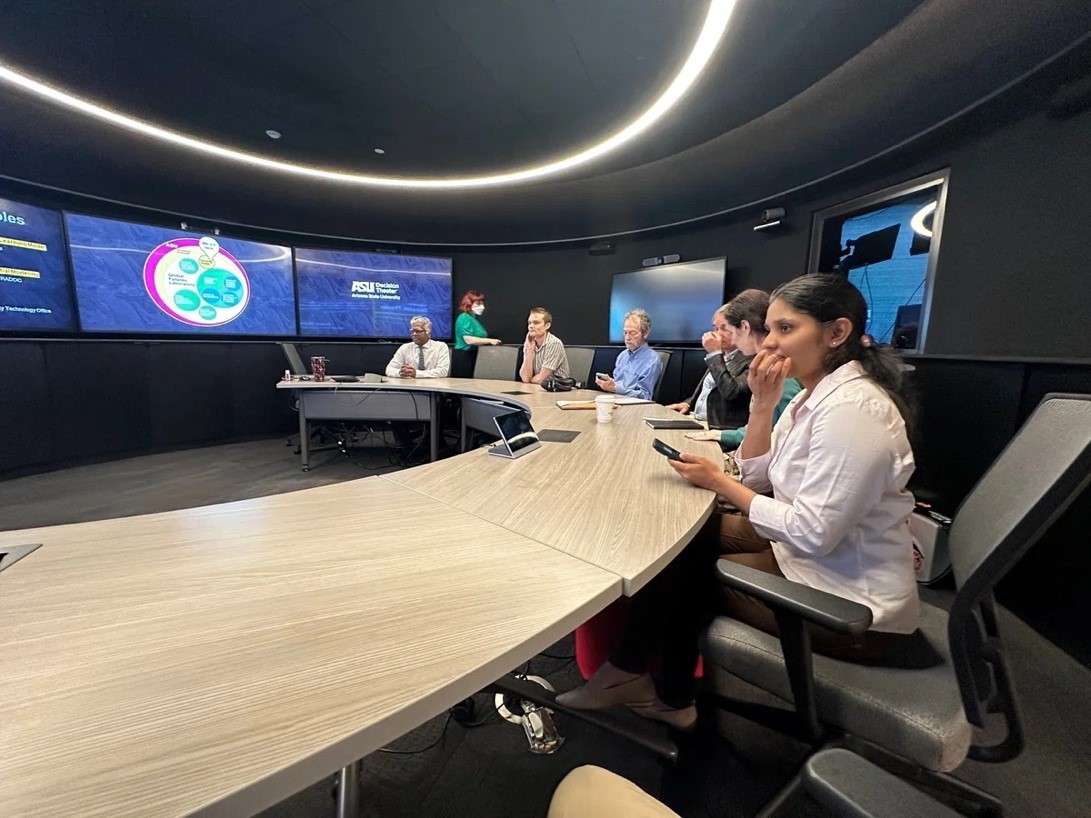
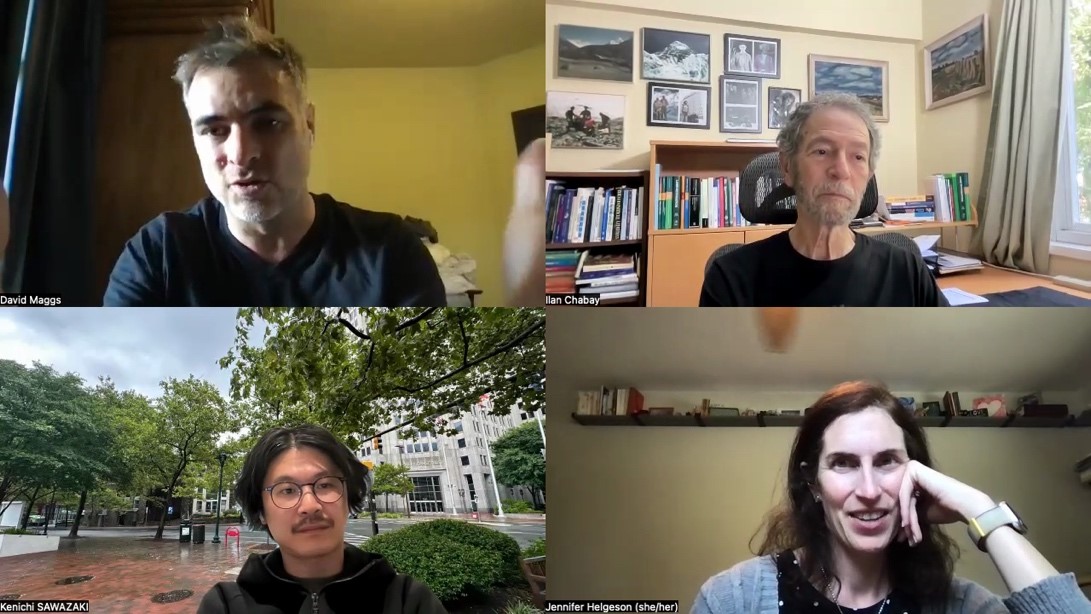
On February 11, 2025, the RIHN-KLASICA Workshop was held at the Research Institute for Humanity and Nature (RIHN), where participants engaged in discussions on the desirable forms of collaboration between science and art for addressing global environmental issues.
I gave a presentation titled "Developing Creative Use of Images," in which I shared insights related to the outcomes of my recent trip to the United States.
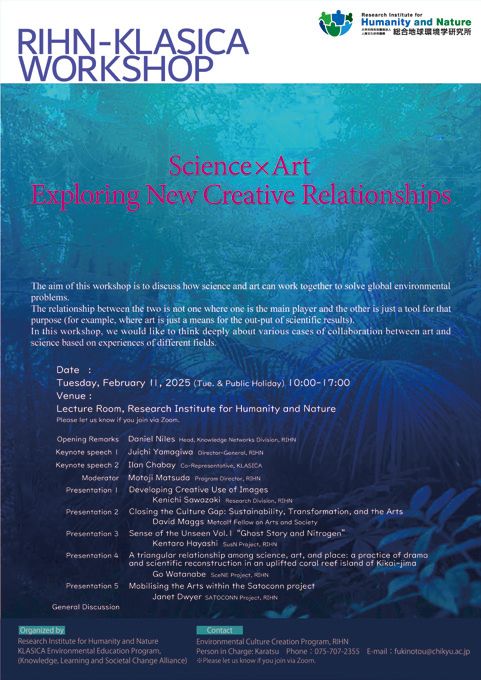

SAWAZAKI Ken’ichi
Assistant Professor at the Research Institute for Humanity and Nature.
Artist, film director, curator.
Holds a doctoral degree in Fine Arts. Co-director of the project “Young Muslim’s Eyes: Crosswork between Arts and Studies.” Works include the multi-layered documentary film #manazashi (Directed by Ken’ichi SAWAZAKI, 124 min, 2021, recipient of numerous domestic and international awards) and the theatrically released film The Garden in Movement (directed by Ken’ichi SAWAZAKI, 85 min, 2016, premiered at the 8th Yebisu International Festival for Art & Alternative Visions).
SAWAZAKI Ken’ichi website: https://texsite.net

